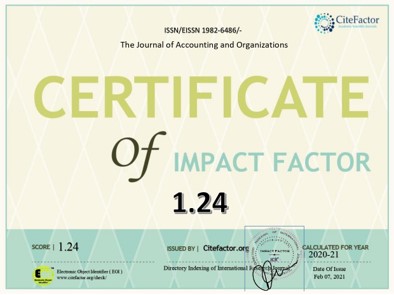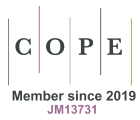Applying Monte Carlo simulation in predicting costs of manufacturing companies: the case of Companhia Vale do Rio Doce
DOI:
https://doi.org/10.11606/rco.v4i10.34781Keywords:
Method of Monte Carlo Simulation, Predicting Costs of Industrial ProductionAbstract
The need for qualified decisions in business environment creates demands for the use of mathematical and statistical methods to assist the decisional process. In this context, this article aims to test the applicability of the method of Monte Carlo simulation to predict changes in production costs in a post-privatization period. To perform the experiment Companhia Vale do Rio Doce - CVRD was chosen, considering its privatization that occurred in 1997. The analyzed variables data were extracted from published financial statements between 1990 and 2004. Production costs (CPV) are simulated in two applications of the method: an application that ignores the effects of privatization and implementation that considers the period after privatization, the reduction of variable costs and the income operating increase. In a privatization process, these effects are expected and were estimated by linear regressions in a previous study by Lustosa and Oliveira (2007). To verify the predictive ability of the method comparative analysis are performed, using statistical tests of means between the real samples and the post-privatization period simulated samples. The results show the suitability of the method in predicting the production costs and consequently assisting the decisional process.Downloads
Downloads
Published
Issue
Section
License
The RCO adopts the Free Open Access policy, under the standard Creative Commons agreement (CC BY-NC-ND 4.0). The agreement provides that:
- Submission of text authorizes its publication and implies commitment that the same material is not being submitted to another journal. The original is considered definitive.
- Authors retain the copyright and grant the journal the right of first publication, with the work simultaneously licensed under the Creative Commons Attribution License which allows the sharing of the work with acknowledgment of authorship and initial publication in this journal.
- Authors are authorized to take additional contracts separately, for non-exclusive distribution of the version of the work published in this journal (e.g. publish in an institutional repository or as a book chapter), with necessary recognition of authorship and initial publication in this journal.
- Authors are allowed and encouraged to publish and distribute their work online (e.g. in institutional repositories or on their personal page) before or during the editorial process, as this can generate productive changes as well as increase the impact and citation of published work (See The Effect of Free Access).
- The journal does not pay copyright to the authors of the published texts.
- The journal's copyright holder, except those already agreed in the Free Open Access Agreement (CC BY-NC-ND 4.0), is the Accounting Department of the Faculty of Economics, Administration and Accounting of Ribeirão Preto of the University of São Paulo.
No submission or publication fees are charged.
Up to 4 authors per article are accepted. Exceptionally duly justified cases may be reviewed by the Executive Committee of the RCO. Exceptional cases are considered as: multi-institutional projects; manuscripts resulting from the collaboration of research groups; or involving large teams for evidence collection, construction of primary data, and comparative experiments.
It is recommended that the authorship be ordered by contribution of each of the individuals listed as authors, especially in the design and planning of the research project, in obtaining or analyzing and interpreting data, and writing. Authors must declare the actual contributions of each author, filling the letter to the editor, at the beginning of the submission, taking responsibility for the information given.
Authors are allowed to change throughout the evaluation process and prior to the publication of the manuscript. The Authors should indicate the composition and final order of authorship in the document signed by all those involved when accepted for publication. If the composition and authoring order is different than previously reported in the system, all previously listed authors should be in agreement.
In the case of identification of authorship without merit or contribution (ghost, guest or gift authorship), the RCO follows the procedure recommended by COPE.








